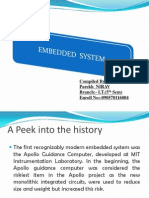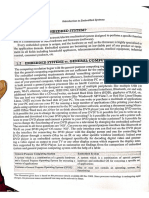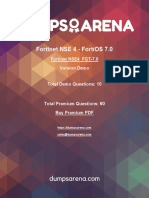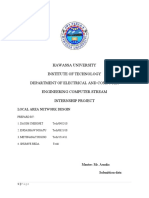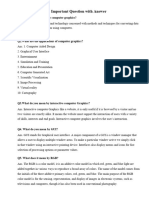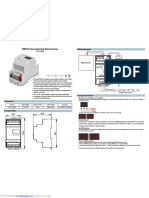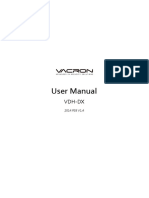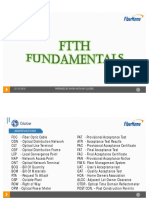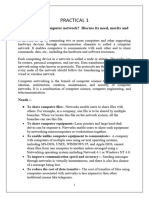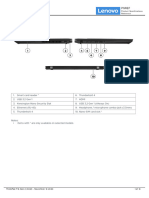0% found this document useful (0 votes)
120 views23 pagesEmbedded System Introduction
This document provides an overview of embedded systems by comparing them to desktop systems, describing their components and applications. It notes that embedded systems are designed to perform dedicated functions in real-time with constraints on power, cost and size. The document outlines the hardware architecture of embedded systems and desktop computers, and discusses processors, storage, I/O and other components commonly found in embedded designs. It provides an example of the components that may be included in a digital camera as an illustration of an embedded system.
Uploaded by
Vinayagam MariappanCopyright
© Attribution Non-Commercial (BY-NC)
We take content rights seriously. If you suspect this is your content, claim it here.
Available Formats
Download as PDF, TXT or read online on Scribd
0% found this document useful (0 votes)
120 views23 pagesEmbedded System Introduction
This document provides an overview of embedded systems by comparing them to desktop systems, describing their components and applications. It notes that embedded systems are designed to perform dedicated functions in real-time with constraints on power, cost and size. The document outlines the hardware architecture of embedded systems and desktop computers, and discusses processors, storage, I/O and other components commonly found in embedded designs. It provides an example of the components that may be included in a digital camera as an illustration of an embedded system.
Uploaded by
Vinayagam MariappanCopyright
© Attribution Non-Commercial (BY-NC)
We take content rights seriously. If you suspect this is your content, claim it here.
Available Formats
Download as PDF, TXT or read online on Scribd
/ 23
